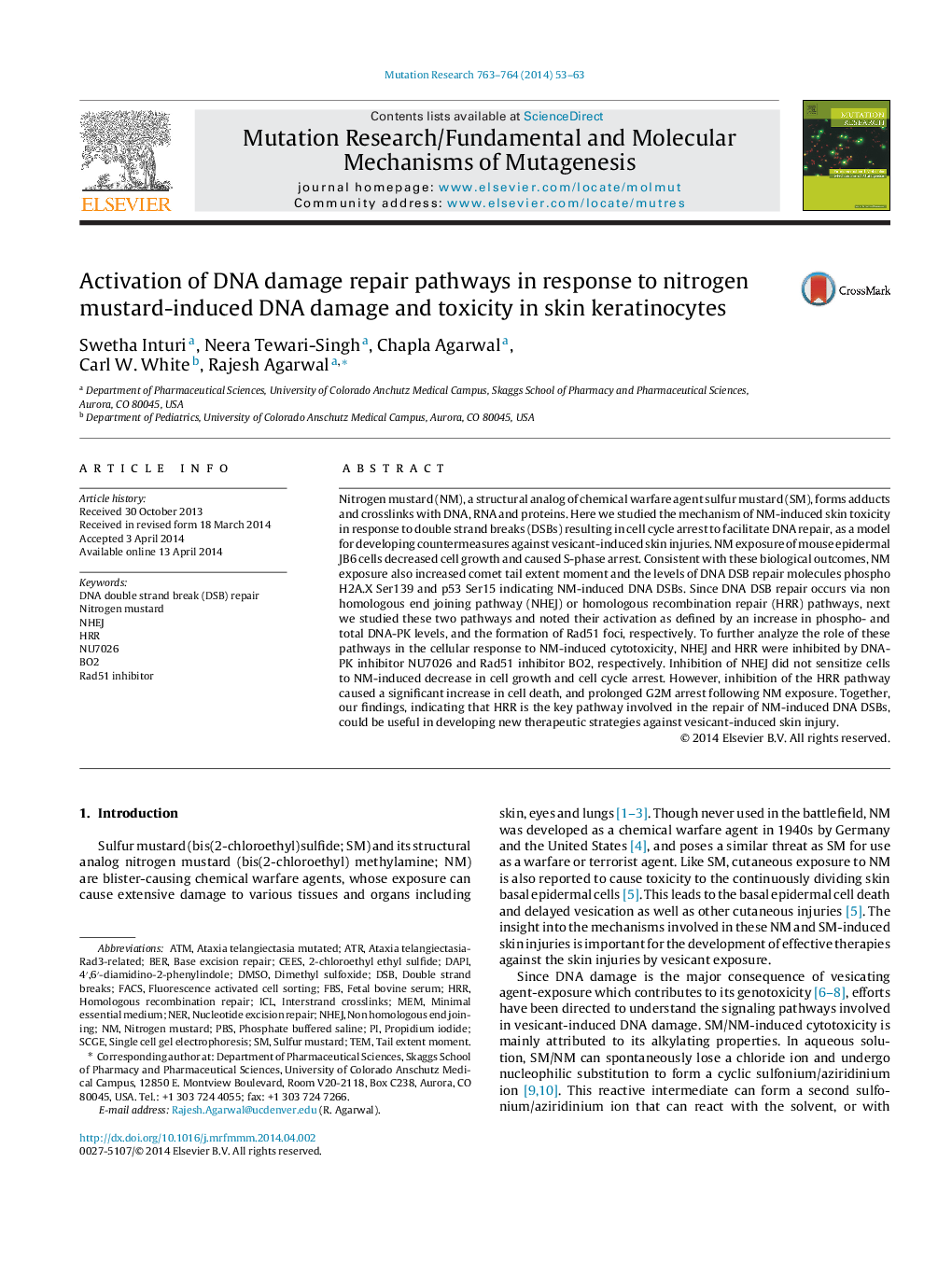| کد مقاله | کد نشریه | سال انتشار | مقاله انگلیسی | نسخه تمام متن |
|---|---|---|---|---|
| 2146284 | 1548334 | 2014 | 11 صفحه PDF | دانلود رایگان |

• NM exposure caused growth arrest and increase in DNA double strand breaks in JB6 cells.
• NM exposure caused the activation of both DNA DSB repair pathways NHEJ and HRR.
• Unlike NHEJ, inactivation of HRR sensitized the cells towards NM-induced cytotoxicity.
Nitrogen mustard (NM), a structural analog of chemical warfare agent sulfur mustard (SM), forms adducts and crosslinks with DNA, RNA and proteins. Here we studied the mechanism of NM-induced skin toxicity in response to double strand breaks (DSBs) resulting in cell cycle arrest to facilitate DNA repair, as a model for developing countermeasures against vesicant-induced skin injuries. NM exposure of mouse epidermal JB6 cells decreased cell growth and caused S-phase arrest. Consistent with these biological outcomes, NM exposure also increased comet tail extent moment and the levels of DNA DSB repair molecules phospho H2A.X Ser139 and p53 Ser15 indicating NM-induced DNA DSBs. Since DNA DSB repair occurs via non homologous end joining pathway (NHEJ) or homologous recombination repair (HRR) pathways, next we studied these two pathways and noted their activation as defined by an increase in phospho- and total DNA-PK levels, and the formation of Rad51 foci, respectively. To further analyze the role of these pathways in the cellular response to NM-induced cytotoxicity, NHEJ and HRR were inhibited by DNA-PK inhibitor NU7026 and Rad51 inhibitor BO2, respectively. Inhibition of NHEJ did not sensitize cells to NM-induced decrease in cell growth and cell cycle arrest. However, inhibition of the HRR pathway caused a significant increase in cell death, and prolonged G2M arrest following NM exposure. Together, our findings, indicating that HRR is the key pathway involved in the repair of NM-induced DNA DSBs, could be useful in developing new therapeutic strategies against vesicant-induced skin injury.
Journal: Mutation Research/Fundamental and Molecular Mechanisms of Mutagenesis - Volumes 763–764, May–June 2014, Pages 53–63